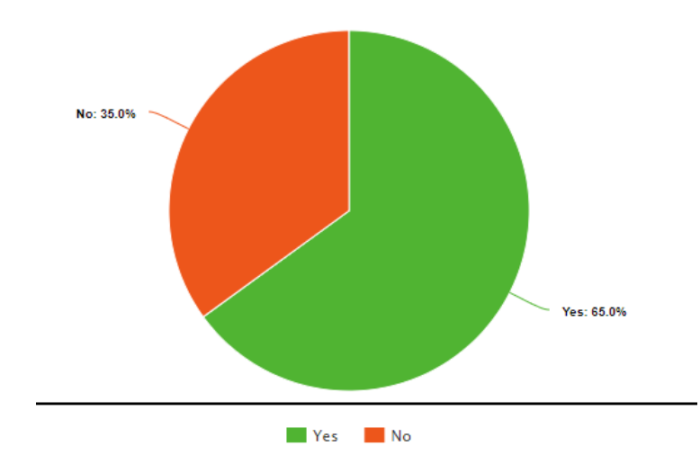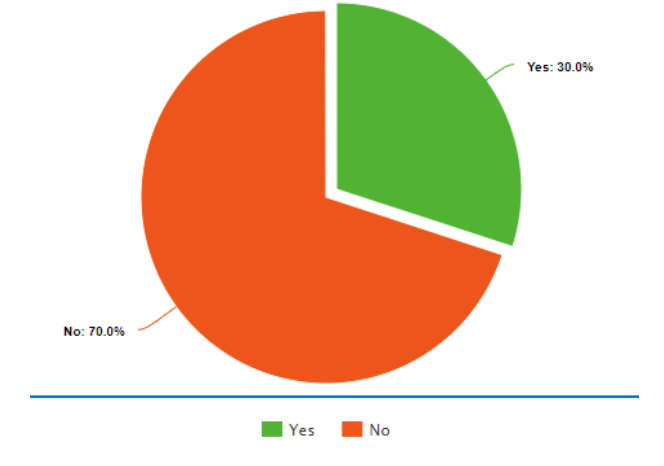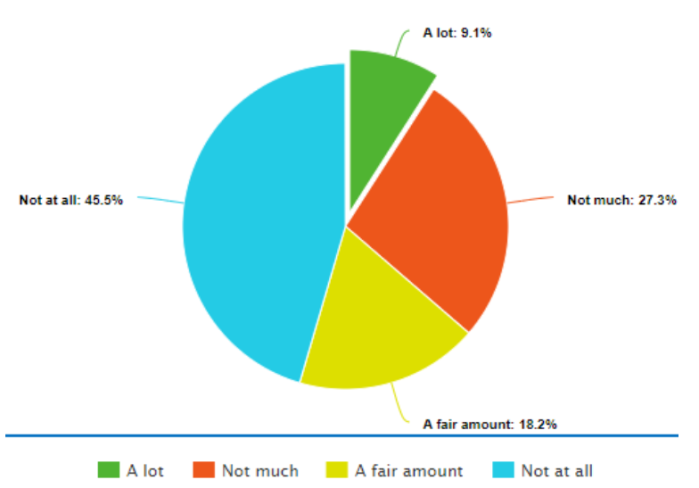- Background
This report responds to a call for proposals to recommend solutions to specific problems in a particular area of focus. The team decided to work on reducing energy consumption in Ngee Ann Polytechnic (NP), focusing on building automation of the lighting and air-conditioning systems.
Today, global warming is one of the main concerns around the world. Scientists around the world are confident that the earth’s temperature will continue to rise for decades to come, with a prediction of -16 to -12 degrees Celsius (°C) by the Intergovernmental Panel on Climate Change, mainly due to greenhouse gases produced by human activities (Jackson, 2019). This has resulted in many catastrophic natural disasters globally. Southeast Asia (SEA) region being “One of the most vulnerable regions to climate change is witnessing the world’s biggest jump in greenhouse gas emissions” (Prakash, 2018). The same author emphasizes that SEA must adapt to climate change, which is mainly caused by its fast-growing economies, and make better adjustments in developing strategies that are heavily supplying greenhouse gases to the atmosphere.
Singapore, being the only first world country in SEA (World Population Review, 2019), should set a perfect example to lead SEA in tackling global warming. The National Environment Agency (NEA) reports that since the commercial sector is the largest energy consumer in Singapore, there is a significant potential for energy savings through improved and sustained energy management (NEA, 2019). According to Energy Market Authority (EMA, 2017), statistics in 2017 show 55.1% of total energy consumption in Singapore was used by commercial buildings, taking up more than half of Singapore’s energy consumption that year. This leads to the inauguration of the ‘Green Mark Scheme’ policy by Building and Construction Authority (BCA), which promotes sustainability in the built environment and raise environmental awareness among developers (BCA, 2019).
Polytechnic schools in Singapore are slowly transforming into green buildings in an attempt to reduce energy wastage to help tackle global warming. Singapore Polytechnic Workshop 5A and Temasek Polytechnic Sports and Arts Centre (Blk 26A) are amongst the few polytechnics to be awarded the BCA Green Mark Award this year (BCA, 2019). From the team’s observations, students are told not to lower the air-conditioning temperature below 25-degree Celsius and the last person who leaves the classroom must switch off the lights and air-conditioning. Despite the recommendations, some students forget or decide to be lazy and leave the classroom without turning off any lights and/or air-conditioning. Worse still, some students adjust the temperature to their desired comfort level because the weather is too hot outside, only to put on their jackets awhile later.
1.1 Current Observations at Ngee Ann Polytechnic
Ngee Ann Polytechnic (NP) has undergone major changes over the past few years; new buildings have been constructed to facilitate study areas, classrooms, and recreational activities within the campus. The newer buildings including Block 51 Makan Place (BCA, 2013), Block 58 (BCA, 2013) and Block 22 have all been Greenmark certified due to their building design for energy efficiency (BCA, 2013; BCA, 2015). This shows that NP is actively improving its campus towards sustainability.
However, the same cannot be said for Block 40, which is commonly used as classrooms for full-time students. The team has observed that the hallway lights are always on from 7 am till 12 midnight, while classroom lights can be controlled but students may forget to turn off the lights after using the classrooms. The team has also conducted a survey and 65% of the students stated that the lights and ACMV are switched on throughout the day (see Appendix A). Motion sensors can be found in toilets, which helps to conserve electricity when the toilets are not in use.
Furthermore, the team noticed that the Air-Conditioning and Mechanical Ventilation (ACMV) system in Block 40 is a centralized system, which means that the room temperature cannot be manually adjusted. The ACMV would only turn on according to the booking timing of the classrooms. However, since the room temperature is not adjustable, during monsoon seasons temperature would be too cold even though the temperature could be reduced.
Singapore typically experiences 2 monsoons, the Southwest Monsoon Season between June to September and the Northwest Monsoon Season between December to March. The average temperature of Singapore is between the range of 25°C to 31°C, with April being the warmest month and January being the coldest month (Hawksford, 2019). The periods of August, September, October 2019, Singapore is experiencing an average maximum temperature of 31.4 °C and an average minimum temperature of 24.8 °C, which are both the average coldest and warmest temperatures on average (Meteorological Service Singapore, 2019).
Ideally in any building on campus, lights could be dimmed or turned off when not in use to reduce energy wastage and ACMV temperatures could be adjusted according to the outside temperature. These improvements are possible with the use of ‘Smart’ technology such as sensors, as the retrofit existing buildings to be more sustainable and cost-efficient.
1.2 Problem Statement
However, 10 out of 45 buildings in NP are not Green Mark certified. From the 10 energy inefficient buildings in NP, Block 40 is one of them in areas such as its lighting and Air-Conditioning and Mechanical Ventilation (ACMV) systems especially in the hallways and classrooms when not in use.
By retrofitting the lighting control system and ACMV systems, the Facilities Department of Ngee Ann Polytechnic could achieve Inter-Ministerial Committee on Sustainable Development’s (IMCSD) target of 80% Green Mark Certification (MND, 2011) for Block 40 at Ngee Ann Polytechnic to attain zero energy wastage.
The Facilities Department should implement building automation in Block 40 at NP which would cut electricity and air-conditioning when not in use, thus, reducing energy consumption.
1.3 Purpose Statement
The aim of this report is to propose to the Facility Department of Ngee Ann Polytechnic to improve on the energy wastage in Block 40 using sensors and automation control of lighting and Air-Conditioning and Mechanical Ventilation (ACMV) through a building automation system (BAS).
- Proposed Solutions
In the survey conducted, the team realised that 70% of the students do not turn off the lights and ACMV after using the class rooms (see Appendix B). In another survey, 45.5% of students indicated that they did not give much thoughts on energy saving within schools (see Appendix C) and this might be a reason for energy wastage on campus.
The team inferred from the BCA Green Mark Scheme on commercial buildings and came up with 2 solutions to reduce energy usage in Ngee Ann Polytechnic for the Facility Department to consider. Among the 2 solutions, the team recommends solution 2.2 to be selected.
2.1 Replace current lighting and ACMV systems with energy efficient systems
2.1.1 Replace light fittings with Light-Emitting Diode(LED) bulbs
Lighting systems in Block 40 plays a big part in energy wastage especially when it is not in use. The ideal situation is to replace the current light fittings in Block 40 to LED bulbs as they are the most energy efficient bulbs and environmentally friendly because it does not contain mercury or lead (Sirena, R. 2011). In addition, it has the longest lifespan of up to 40 or 50 years which can save cost on replacing the bulbs frequently. LED lights are 80% more efficient than traditional lighting such as fluorescent and incandescent lights (Alex, C. 2013). In the same article, 95% of the energy in LED bulbs are converted to light and only 5% is wasted as heat. This is compared to fluorescent lights which converts 95% of energy to heat and only 5% as light.
2.1.2 Allow occupants to manually adjust the temperature of the air-conditioning system
The current ACMV system is a centralised unit in Block 40 does not allow occupants to adjust the temperature manually. This means that students studying in the block are unable to adjust the temperature to their desired comfort level and therefore, creating an unproductive environment.
To allow manual adjustment of the ACMV temperature, replacement works need to be carried out to change the centralised to a decentralised unit.
2.2 Retrofit Block 40 in Ngee Ann Polytechnic
2.2.1 Install photosensors in Block 40 for the lighting systems
Lighting systems in Block 40 plays a big part in energy wastage especially when it is not in use. During the day, most of the lights within rooms and even in the hallways are wasted as at times, natural light is able to provide sufficient lighting to the room or hallway and thus, wasting energy from the lighting systems. Photosensors respond to changes in light (Pacific Gas and Electric Company, 1997). For example, when the surrounding light level falls below a preset level, the sensor detects the fall and will switch on the corresponding lights to brighten up the area. With this, NP is able to reduce energy wastage by switching off lights during unnecessary conditions.
2.2.2 Install microprocessor-based centralized load programmers
Microprocessor-based centralized load programmers work by programming the lighting or ACMV system to switch on and off at selected times throughout the day (Pacific Gas and Electric Company, 1997). For example in office buildings, the lights would typically be programmed to switch off after workers have left for the day. By installing these programmers, the Facility Department of NP is able to program the lighting and air-conditioning systems themselves based on the school’s schedule and further requests by the lecturers or students. This would result in saving more energy and reducing wastage.
- Benefits of Recommended Solution
After careful consideration, the team has concluded to recommend solution 2.2 to the Facility Department of Ngee Ann Polytechnic. These are the reasons to implement the recommended solution:
3.1 Increase savings in energy cost
Installing sensors and specialized programmers for both lighting and air-conditioning can prevent energy wastage as these systems will be switched off according to the room occupancy and surrounding temperature. This causes the least amount of energy used throughout the day and results in an increase in savings for energy consumption.
3.2 Decrease carbon emissions into the environment
The most notable way to reduce carbon emissions is to reduce energy consumption (Saveonenergy, 2019). In the same article, carbon emissions come from power plants that are used to generate electricity by burning fossil fuels. Thus, reducing energy consumption reduces the amount of electricity that power plants are needed to produce and subsequently reducing carbon emissions. An example given by the article states that “if every American household traded in just one incandescent light bulb for an energy efficient light bulb, the reduction in pollution would be equivalent to taking 1.3 million cars off the road”.
- Limitations of Recommended Solution
Despite the benefits of the recommended solution, it is bound to have limitations in relation to the implementation of it. These are the limitations of the recommended solution:
4.1 High initial and maintenance cost
Installing a new BAS certainly has a benefit to it. It allows the user to invest in the most advanced technologies and offers choices in the quotations since it is not fixated into one company’s offerings. Companies that want the latest and most advanced technologies means that those technologies can be costlier than the older ones. The market price of BAS in 2018 was ranging from USD $2.50 to USD $7.50 per square foot (MACC, 2018).
After installing BAS, the job does not end there. The subsequent job is to maintain and upgrade BAS to ensure it operates smoothly. BAS consists of both hardware and software (HSC, 2018), the maintenance or upgrade of such integrated system requires the assistance of specialised consultants, which involves money too. Depending on how frequently maintenance need to be carried out, the cost would vary.
4.2 Complex network system
Installing a new building automation system (BAS) may look easy but it is complicated. In the article, (Michael, 2017), “it’s complicated mechanical and electrical systems, is still more important than understanding how to set up and manage a basic network.”. This shows that even though it will reduce the energy cost and decrease in carbon emissions, the system does not operate as easy as it seems. Further training needs to be given to existing facilities personnel to operate BAS.
With reference to the same article, “Smart building networks need to be “managed” and this brings us to an important difference between devices on a building automation LAN and the LAN that is used for standard computer networks.” Every device in the network has a dynamic IP address, with each user login a new IP address is created and assigned to the user. This would pose a challenge for BAS, since it is more difficult for a device to find another device if the IP address is changing frequently (Michael, 2017).
- Evaluation for Recommended Solution
Despite the limitations for the recommended solution, the team strongly believe by investing a huge sum into the initial cost of implementation and upgrading of a new lighting and ACMV system, there will definitely be a vast difference in energy consumption in the long run as compared to the current system NP is using. The team has decided not to recommend the other solution as changing the entire ACMV system to a decentralised system would take a much longer time to complete as compared to installing sensors and programmers in Block 40. It takes a longer time to complete the installation which would also mean closing down the entire block for the process which leaves NP a block less for teaching purposes.
- Methods & Procedure
6.1 Primary Research
The teams’ primary research includes site visits to NP, made observations of block 40 based on past experiences studying in NP and block 40. The team has also conducted surveys so as to make our source and findings more reliable.
6.2 Secondary Research
The team made use of BCA’s website, SIT OneSearch and Google Scholar to find relevant articles and reports about energy wastage and methods to reduce energy consumption.
- Conclusion
The team have concluded that reducing energy wastage and consumption can benefit companies, institutions and homes. Energy wastage also means burning unnecessary fossil fuels and coals which contributes to global warming and air pollution. Thus, NP should adhere to BCA’s Green Mark Scheme to achieve minimal energy wastage by implementing our solution. Not only can it be done to Block 40 but the remaining blocks in NP that are not Green Mark certified.
- References
Ambi Climate. (2018). Your Air Conditioning Myths, Debunked. Retrieved 2019, October 31 from https://www.ambiclimate.com/en/blog/2014/05/12/your-air-conditioning-myths-debunked/
BCA. (2010). What is zero energy building? Retrieved 2019, October 28 from https://www.bca.gov.sg/zeb/whatiszeb.html
BCA. (2013). Green Mark 2013-BCA. Retrieved 2019, October 28 from https://www.bca.gov.sg/greenMark/others/gm2013.pdf
BCA. (2015). BCA Green Mark Awards 2015. Retrieved 2019, October 28 from https://www.bca.gov.sg/greenmark/others/gm2015.pdf
BCA. (2019). BCA Green Mark Awards 2015. Retrieved 2019, November 4 from https://www.bca.gov.sg/GreenMark/others/gm2019.pdf
Hawksford. (2019). Weather and Climate in Singapore. Retrieved 2019, November 4 from https://www.guidemesingapore.com/business-guides/immigration/get-to-know-singapore/weather-and-climate-in-singapore
Hughes Systique Corp. (2018, October 22). Benefits and Loopholes in Building Automation Control Systems. Retrieved 2019, October 31 from https://hsc.com/Blog/Benefits-and-Loopholes-in-Building-Automation-Control-Systems
Jackson, R. (2019). The effects of climate change. Climate Change:Vital Signs of the Planet. Retrieved 2019, October 28 from https://climate.nasa.gov/effects/
Mid-Atlantic Controls Corp. (2018, September 6). How Much Does A Building Automation System Cost? Retrieved 2019, October 31 from https://info.midatlanticcontrols.com/blog/how-much-does-a-building-automation-system-cost
Michael, P. (2017). Understanding networks in modern building automation systems. Retrieved 2019, October 31 from https://www.hpac.com/managing-facilities/understanding-networks-modern-building-automation-systems.
Meteorological Service Singapore (2019,19 August). Monsoon Update. Retrieved 2019, November 4 from http://www.weather.gov.sg/weather-forecast-monsoon-update/
NEA. (2019). Energy Efficient Singapore. Retrieved 2019, October 28 from https://www.nea.gov.sg/our-services/climate-change-energy-efficiency/energy-efficiency/industrial-sector
PG&E. (1997). Automated On/Off Controls for Lighting. Retrieved 2019, October 31 from https://www.lightingassociates.org/i/u/2127806/f/tech_sheets/Automated_on_off_lighting_controls.pdf
Prakash. (2018, September). Boiling Point. Retrieved 2019, October 31 from https://www.imf.org/external/pubs/ft/fandd/2018/09/southeast-asia-climate-change-and-greenhouse-gas-emissions-prakash.htm
Sirena, R. (2010). Which Light Bulbs are the Most Energy-Efficient? Retrieved 2019, October 31 from https://www.networx.com/article/which-light-bulbs-are-the-most-energy-ef
SaveOnEnergy. (2019). How Does Saving Energy Help The Environment? Retrieved 2019, October 31 from
https://www.saveonenergy.com/learning-center/energy-saving-tips/how-does-saving-energy-help-the-environment/
SEPCO. (2013). The Advantages of LED Lights for the Environment. Retrieved 2019, October 31 from https://www.sepco-solarlighting.com/blog/bid/145611/the-advantages-of-led-lights-for-the-environment
World Population Review. (2019, October 25). First World Countries Populations. Retrieved 2019, October 31 from http://worldpopulationreview.com/countries/first-world-countries
Appendices
Q1: Do you notice that the lights and ACMV system in Block 40 are switched on throughout the day?

Appendix A
Q2: Do you turn off the lights and ACMV after using the classroom?
 Appendix B
Appendix B
Q3: How much thought do you give in saving energy at school?

Appendix C


